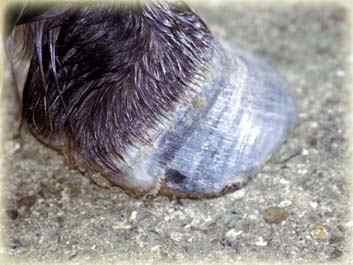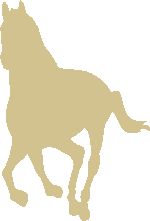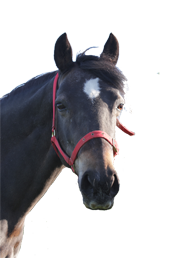Developmental phase of laminitis
What happens before pain is observed?
The commencement and duration of the developmental or prodromal phase of laminitis can only be truly made when an event which is known to cause laminitis occurs, for example post-partum metritis after foaling, then the date and time of the onset and when the first symptoms of pain of laminitis become evident, will allow the definition for the duration of the development phase. Other conditions which have a more gradual onset will be very difficult to establish when precisely the development phase commenced.
Laminitis is often a sequel to a disease or condition which in some cases triggers laminitis.
All the listed conditions below are known to induce laminitis.
- Excess of carbohydrates (accidental access grain or over feeding)
- Obesity (lush pasture)
- Enteritis
- Colitis
- Peritonitis
- Metritis & retained placenta
- Azoturia
- Cushing's Disease
- Equine Metabolic Syndrome
Generally the duration of the developmental phase is considered to last just a few days or hours at most, as the triggering event will cause laminitis in a very short time. When the triggering event is unknown as in obesity induced laminitis, it's impossible to define the duration of the developmental phase, which in these cases could be months.
The rate of quarter growth and the shape and strength of the hoof capsule will determine the duration of the developmental phase and the severity of the subsequent laminitis.
Revised interpretation of developmental phase
The dorsal wall lifting model of laminitis proposes that the systemic diseases which are associated with laminitis are not acting directly on the sensitive laminae but instead cause the quarters of the hoof capsule to grow faster than normal. Over a short period of time this causes the hoof capsule to change in shape, the laminae and other sensitive structures are then traumatised as the hoof capsule distorts beyond its normal limits. The rate of quarter growth and the shape and strength of the hoof capsule will determine the duration of the developmental phase and the severity of the subsequent laminitis.
Not all equines become laminitic
Despite encountering what could be a triggering event or being obese, not all equines become laminitic, one possible reason is that weak hoof capsules with flaring or ‘dissipating quarters’ will harmlessly splay outwards when the quarters start to grow faster (Fig 1) and not cause the hoof capsule to distort at the dorsal hoof surface. Breeds which have weaker hoof capsules, for example Thoroughbred horses are usually under represented in laminitis cases, while cases of laminitis in cob types are common.

Generally, stronger hoof capsules are intolerant to rapid heel growth and become severely laminitic while weak flaring hooves don't distort at the toe so the laminae are not traumatised.
Updated: 25/02/2020

